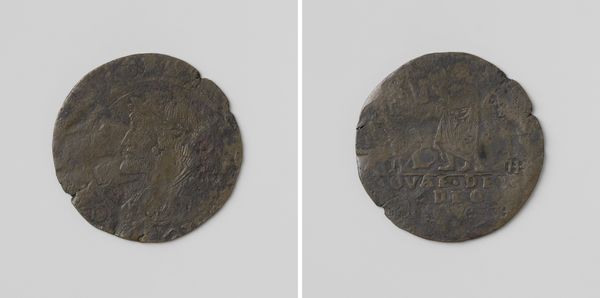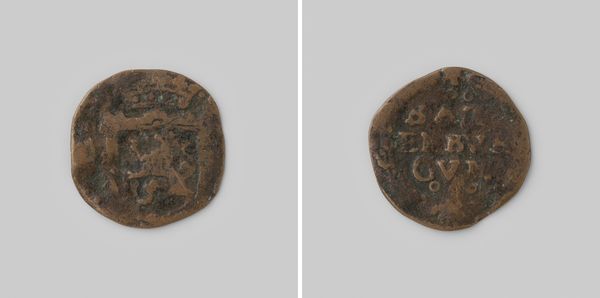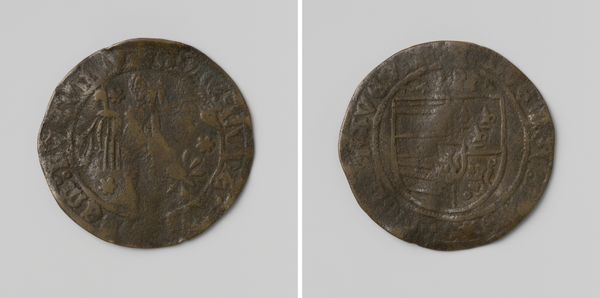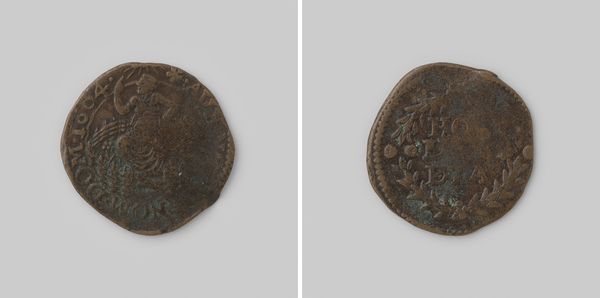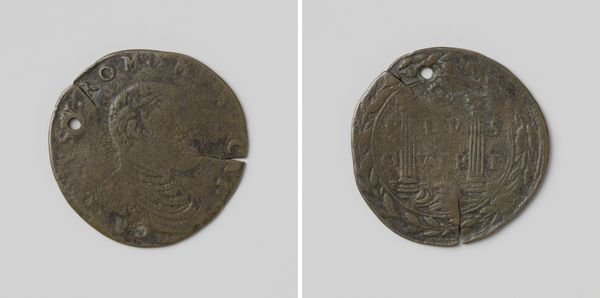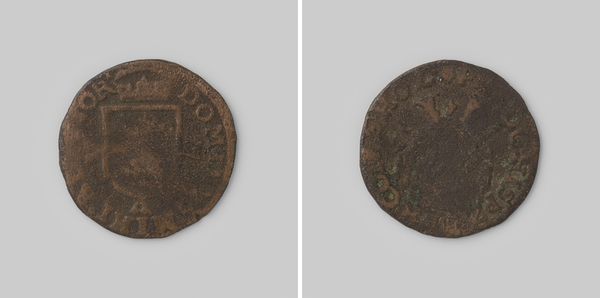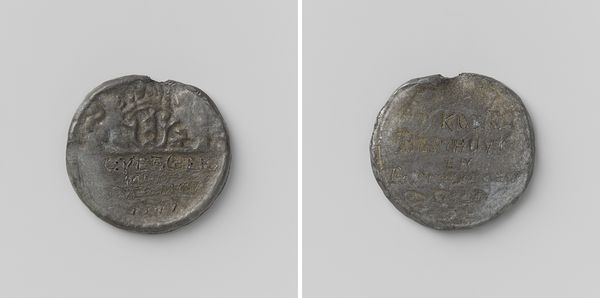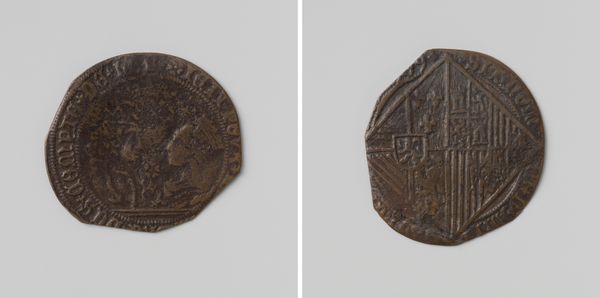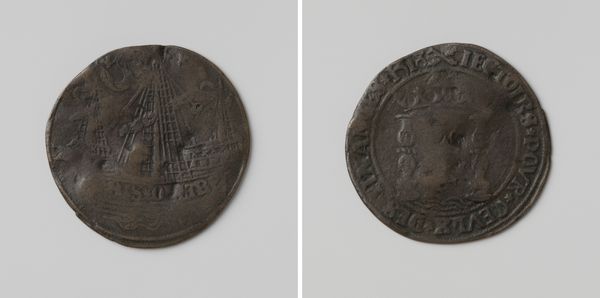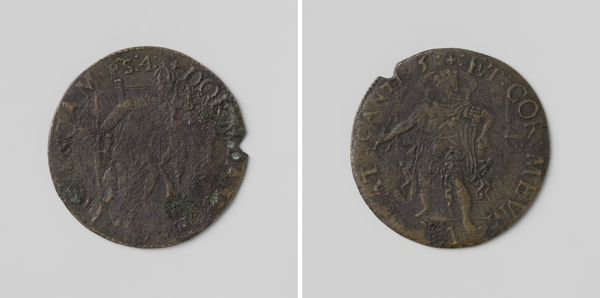
print, metal, bronze
#
portrait
#
medieval
# print
#
metal
#
sculpture
#
bronze
#
history-painting
Dimensions: diameter 2.6 cm, weight 4.97 gr
Copyright: Rijks Museum: Open Domain
Curator: The "Hollandse oord op naam van Philips II, 1578," currently residing in the Rijksmuseum, offers a compelling snapshot of Dutch history. It’s a bronze example of a medieval-era print. Editor: My first thought is how worn it looks. It's patinated, rough. You can almost feel the history ingrained in its surface. Curator: Indeed. The wear speaks volumes about circulation and use during a turbulent period. The piece reflects power structures inherent during Phillip II's reign, set against the backdrop of growing Dutch resistance and nascent national identity. These coins were both objects of daily commerce and symbolic affirmations of authority. Editor: And materially, the choice of bronze is telling. Not as precious as silver or gold, but durable and more accessible. It suggests a wide distribution, intended for common transactions. The minting process, too, speaks to early industrial methods. Curator: Exactly. And beyond its metallic composition, the imagery pressed into the coin needs consideration. This happened during an era of evolving visual languages around governance, with iconography being vital for political and social persuasion. The shield with lion reflects identity struggles still resonant today. What are the semiotic implications of the chosen symbols when analyzed in this framework? Editor: Good point. The degradation to the die and any imperfections tells part of the production and lifespan. The object moves beyond mere political device into that of commodity. To study it allows insight into value, exchange and control of production by power in society. Curator: Viewing this, then, requires us to delve into the coin’s broader political circumstances and power relationships, recognizing this bronze object embodies layered sociopolitical dialogues from a transformative historical phase. Editor: I agree. I leave considering all labor from the mining, production and usage during political shift represented here. Curator: It serves to highlight how even the smallest artifacts can unlock understandings of the larger societal, political, and ideological conditions. Editor: And remind us of material’s role in social history.
Comments
No comments
Be the first to comment and join the conversation on the ultimate creative platform.
